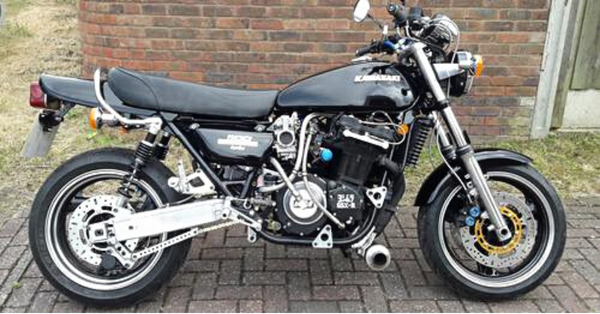Kai Bailey’s KZ1000 / GSX-R1100 Turbo…
For 1977, Kawasaki introduced the KZ1000, their 90-hp inline-four successor to the mighty Z1 and KZ900. Not only was it one of the fastest factory bikes of the era, but it would remain in production until 2005 as a police model! The impact on the motorcycling world was immediate:
“The KZ1000 is the quickest production bike we’ve tested, and it’s still King of the Superbikes.” —Cycle World, 1976

Beach Racing at Margate!
Of course, when something is fast, there’s always someone who wants to make it faster — our kind of folk. Our new friend Kai Bailey of Kent, UK, is one such man. A construction company director by trade, Kai has been riding since he was 7, and he has no intention of stopping:
“My aim is to enjoy building and riding motorcycles and classic cars until the internal combustion engine is banned everywhere or I die, whatever comes first.”

The bike you see here started life as a 1977 Kawasaki KZ1000A1 — the first year’s incarnation of the model. Kai has actually owned the bike since ’99, but the engine rebuild it needed took a backseat to other bikes and projects in his workshop:
“I seem to have become that old fart you knew who had tools and stuff, he would help you fix your bike and his wife made you tea. I love it.”
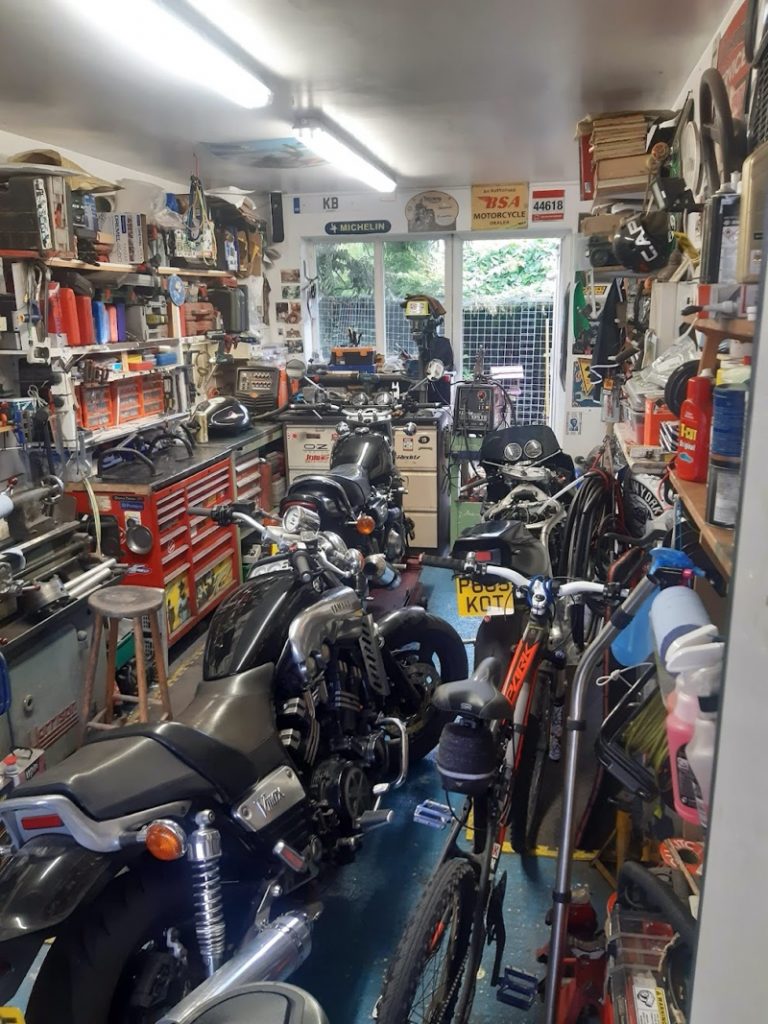
Kai’s original intention was to build a turbocharged 1015cc Zed. He bought an old Suzuki GSX-R1100 drag bike for the ignition and fuel systems, but his plans soon changed:
“I made a parts list for the engine, and even in standard form, a rebuild was not a cheap affair. It could then just explode and leave an expensive pile of scrap. It was then that I had the idea of using the tried-and-tested engine that came with the drag bike.”
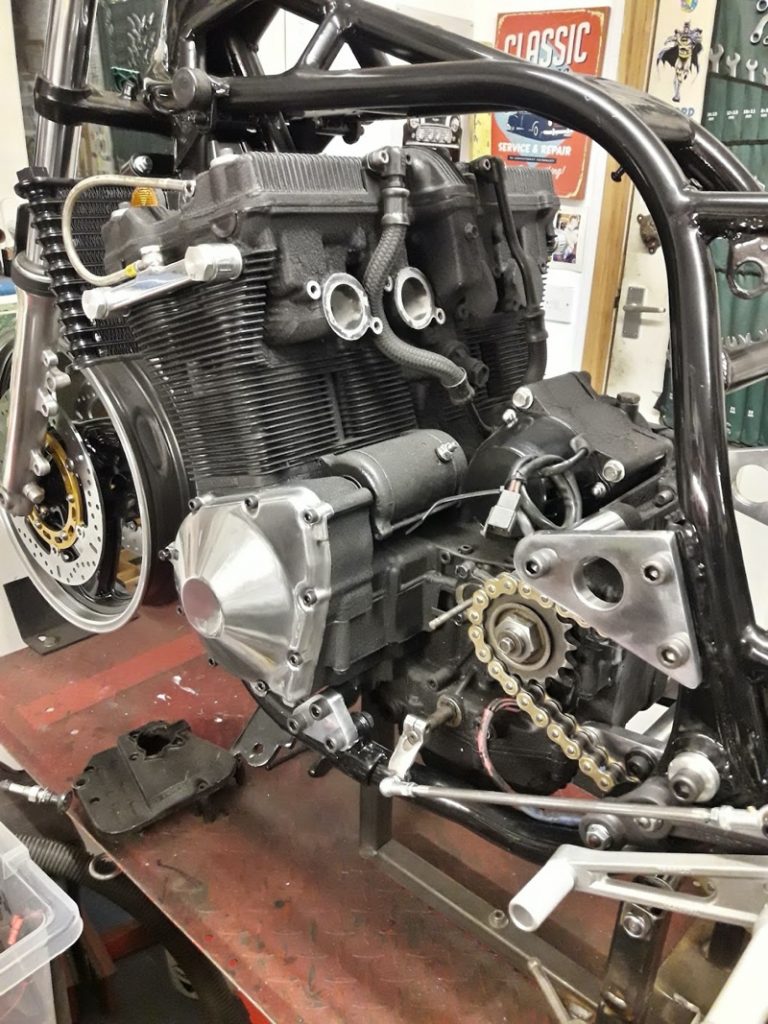
As it turned out, the 1052cc Suzuki mill was from an ’88 slab-side GSX-R, and it was easier to fit than Kai expected — within an hour, he’d run a chain! Originally, he ran the bike with a Garrett T04B pulling through a HSR45 Mikuni carb, but it guzzled petrol and the turbo lag were terrible. Says Kai of the original riding experience:
“When it was first built, bloody evil honestly. It was running a twin-stage Turbo Smart programmable boost system, 12 then 17 psi as it was set up for the drag bike. This was the hospital express as it would go berserk when the second stage loaded up the wastegate.”
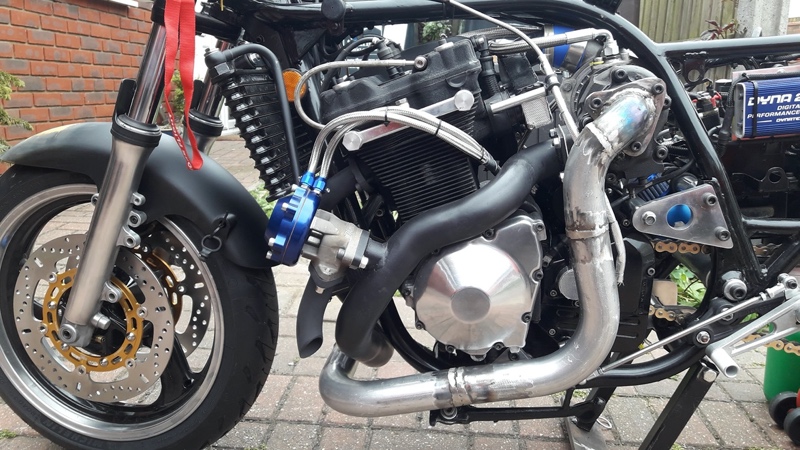
He soon moved to a TD04 turbo from a Subaru WRX/Forester, pushing air through a set of fully-functioning pressurized 36mm Mikuni carbs modified from a Suzuki Bandit.
“This gave good starting, clean power delivery, and it ticked over too!”
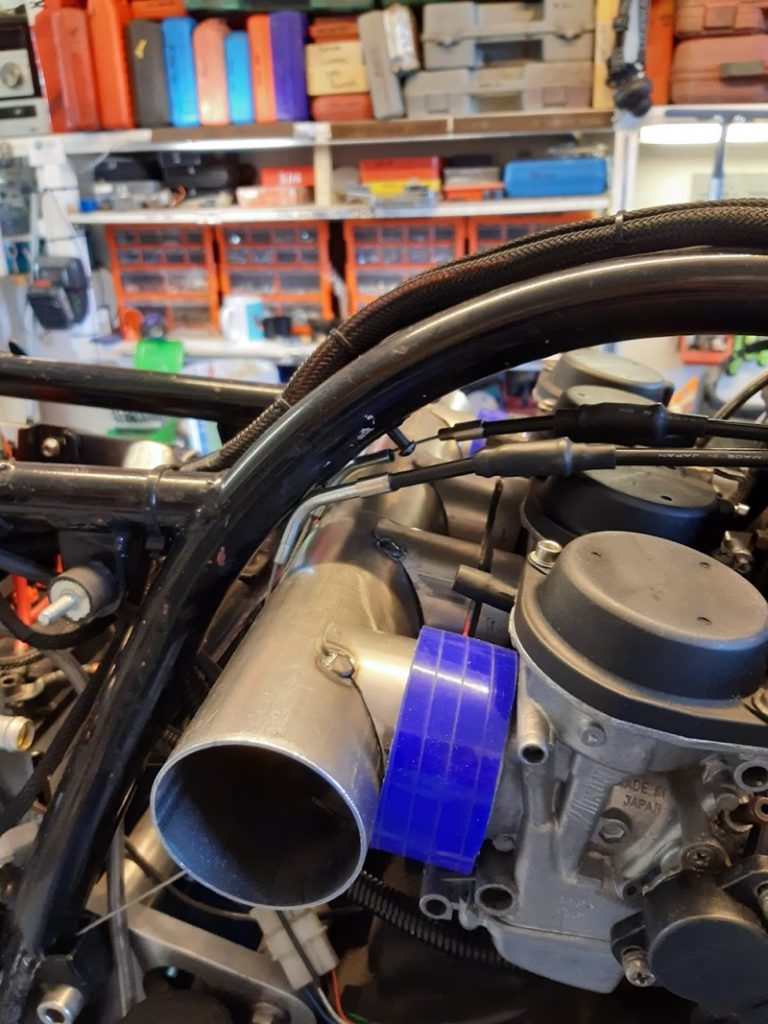
Known as either “Rosie” or simply the “Turbo Thing,” this turbo KZ1000/GSX-R1100 is no garage queen:
“I have raced it at Lydden, Brands, Margate Beach. I use it to go to Tesco and ride it in the rain (it’s easier than the V Max). At one point it had heated grips as it is used all year round…. If you have seen Return of the Jedi, the Ewok on a speeder bike sums up the experience. It has Hayabusa power, but the Zeds braced and modified chassis is no match for a ‘Busa frame.”
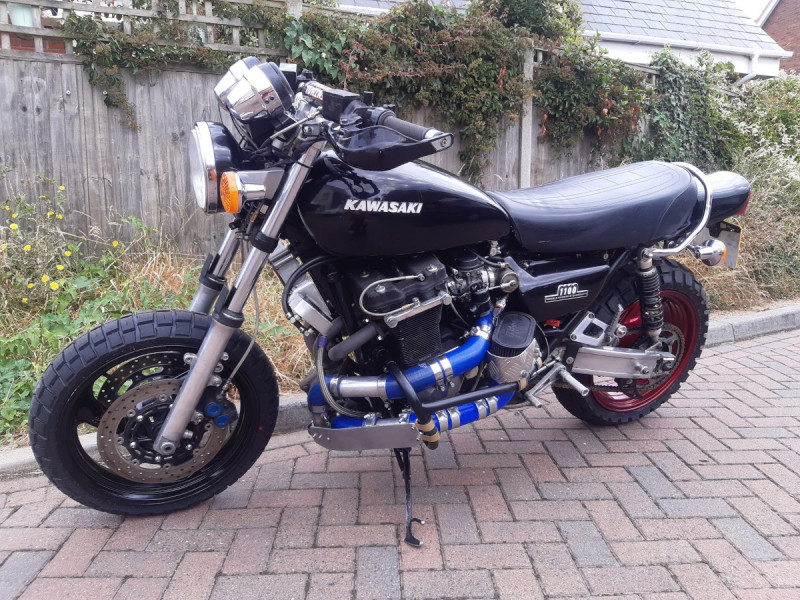
Below, we get the full story on the build from Kai himself.
KZ / GSX-R Turbo Special: In the Builder’s Words

About Myself
I am a 48-year-old guy who works in the construction industry as a company director. I did my time as an apprentice working with construction machinery, studying at college as I learnt the trade. At college I took courses in diesel engines, fuel systems, vehicle electrics and hydraulics as well as welding and some machine shop stuff. After qualifying, I went to work in product support for a JCB excavator dealership for a few years. Roll forward to 2005 and I started at a construction company as a mechanical fitter and worked my way up till I was made a director about six years ago.
I live in the southeast of the UK, about 70 miles east of London on the coast in Broadstairs. I have lived here for nearly 20 years enjoying the skateboard scene until a few years back; I also dip in and out of mountain biking and running in between my beer-consuming times of the year. I have also built my wife a classic mini that is a bit of a wolf in sheep’s clothing. It’s a cute car in appearance but runs on coilovers, upgraded brakes, and a fairly hot-poop Cooper motor.
I am married with a son who is 20, he has worked with me for over a year now and is looking like a natural welder.
My aim is to enjoy building and riding motorcycles and classic cars until the internal combustion engine is banned everywhere or I die, whatever comes first.

My History with BikesBikes have always been in my life. My dad rode from the 1960’s onwards and a lot of his friends would visit our house on bikes when I was a kid. If I wasn’t riding my bicycle making engine noises, I was looking at books (remember those) and the magazines of the time. I would also draw pictures of bikes too, quite often old-school café racers with clip-ons and rearsets. My Dad also had quite a few older hardbacks on tuning old British bikes and other books on bike mechanics.
I got my first bike, a Garelli Tiger, when I was about 7 years old. A local school ran a trials club in the afternoon once a week and I was hooked for life. I rode my BMX the rest of the time between these weekly sessions, often off-road and at the local skate park gaining a lot of skill that I would later transfer to powered machinery.

My Workshop
About 14 years ago my wife and I built our own house on a plot of land we bought, allowing us to configure our home to our requirements. The workshop was included within the house when we had the plans drawn up, meaning I can walk through the living room and open a door into the centrally heated workspace. All these years later I don’t take it for granted, as I worked on my bikes outside and in cramped sheds for years. We did haul a few indoors, back when I shared houses with other bikers, though.
I have accumulated a large collection of tools over the years working as an engineer; these found a new home in the workshop when my work drifted away from full-time spanner work. In addition to these, I picked up an old Harrison lathe from 1953 a few years back and a 200a AC/DC TIG welder. I still use my old cheap shit MIG for a lot of stuff; I want to replace it but it refuses to die after 20-plus years of service. Despite the unit being fairly basic, it produces decent welds. My hydraulic bike ramp was another early addition to the newly constructed workshop — being able to work on a machine at a comfortable height is so nice and gives my back a break!
My main issue these days is space. I have four bikes in the workshop now (V Max, Bandit special, Aprilia RS125, and the Z), and I have two to accommodate in the future. These are an old 1976 Z900a4 and another RS125 that will get a Gamma 250 motor shoehorned into it.
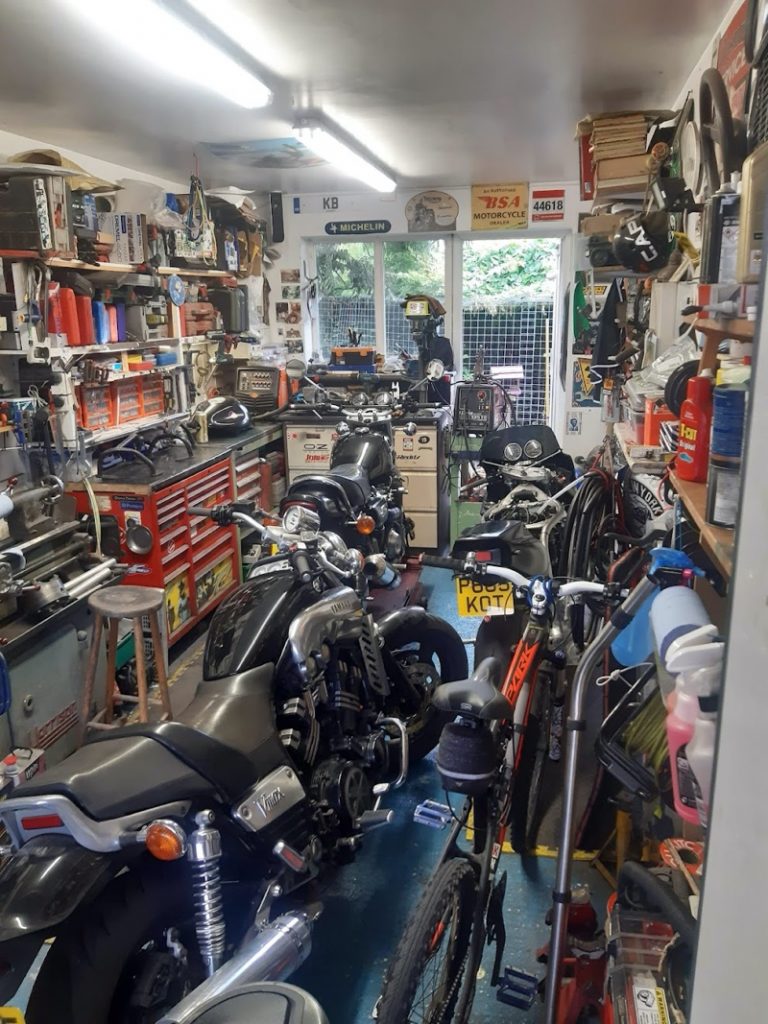
Finding space!
It has a reasonable sound system and is where I spend a lot of my spare time creating stuff I find cool or interesting. It is also where people I have got to know over the years come to sort out their mechanical woes.
I seem to have become that old fart you knew who had tools and stuff, he would help you fix your bike and his wife made you tea. I love it.

Cheap regulator setup
About the Bike
This bike began life in the USA as a 1977 KZ1000a1. I had the bike back in 1999 and ran it for a few years before parking it up and moving onto a FZR1000 and then V Max (which I still own). In the meantime, the bike sat and the already worn cycle parts deteriorated and the rattling and smoking motor didn’t appear to heal itself either! It was basically a Z made from parts, most of which were past their best.
My original intention was to rebuild it as a turbocharged 1015cc Zed. I bought an old drag race bike, purely for the fuel and ignition systems as well as the massive Garrett blower. I made a parts list for the engine, and even in standard form, a rebuild was not a cheap affair. It could then just explode and leave an expensive pile of scrap. It was then that I had the idea of using the tried-and-tested engine that came with the drag bike. Looking at the numbers, the 1052cc GSXR motor it was equipped with started life as an early slab-side unit from around 1988.

The motor was such an easy job to fit, and within an hour, I had a chain run. The hardest bit was making the bodywork fit. I chose to find an alternative to cutting the fuel tank to accommodate the higher (but shorter) powerplant. All the bodywork has been moved, but all the parts still relate to each other to retain the correct lines.
It originally ran on a Garrett T04B pulling through a HSR45 Mikuni carb. It was great fun, had appalling fuel economy, and was a raw-natured bike to ride. The downside was the turbo was so big, the bike used to drop out of the power between gear changes. It also used to burn my left leg while the carb would coat my right knee with fuel.

Moving forward, I moved to a TD04 turbo from a Subaru WRX/Forester that pushed air through modified 36mm Bandit carbs off a MK2 1200. This gave good starting, clean power delivery, and it ticked over too!
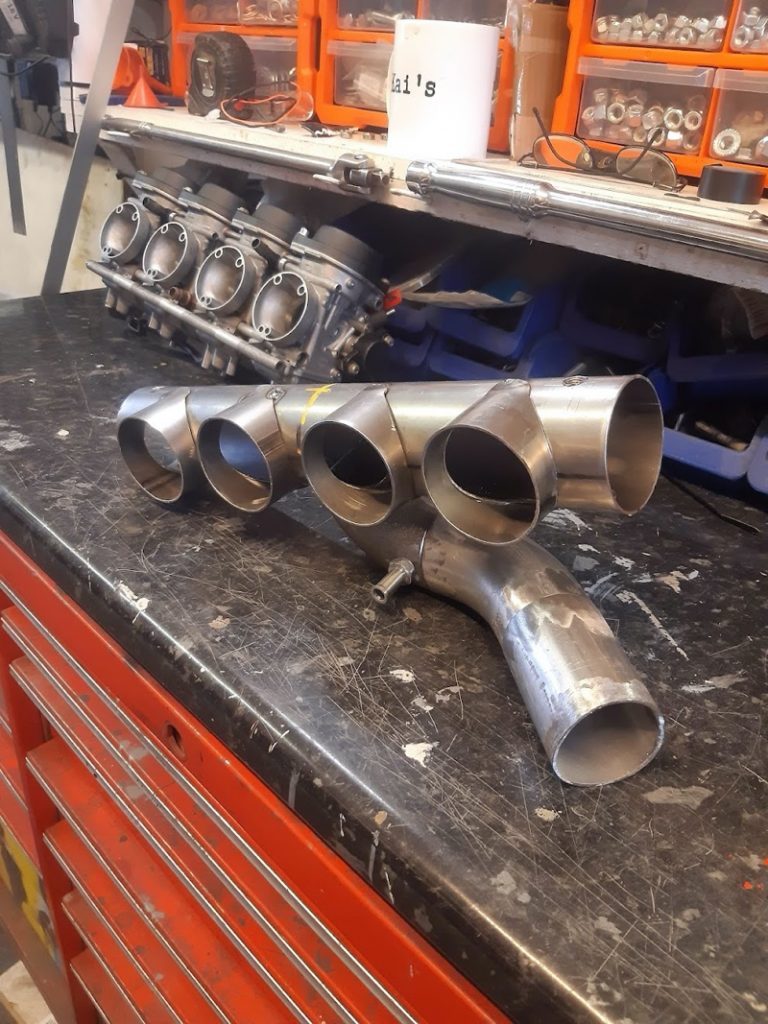
Mikuni pipework
Chassis is a mix of Zed, GSXR, Bandit, Thunder Ace, XJR1300, RD, ZZR and even some SP370. I have raced it at Lydden, Brands, Margate Beach. I use it to go to Tesco and ride it in the rain (it’s easier than the V Max). At one point it had heated grips as it is used all year round.
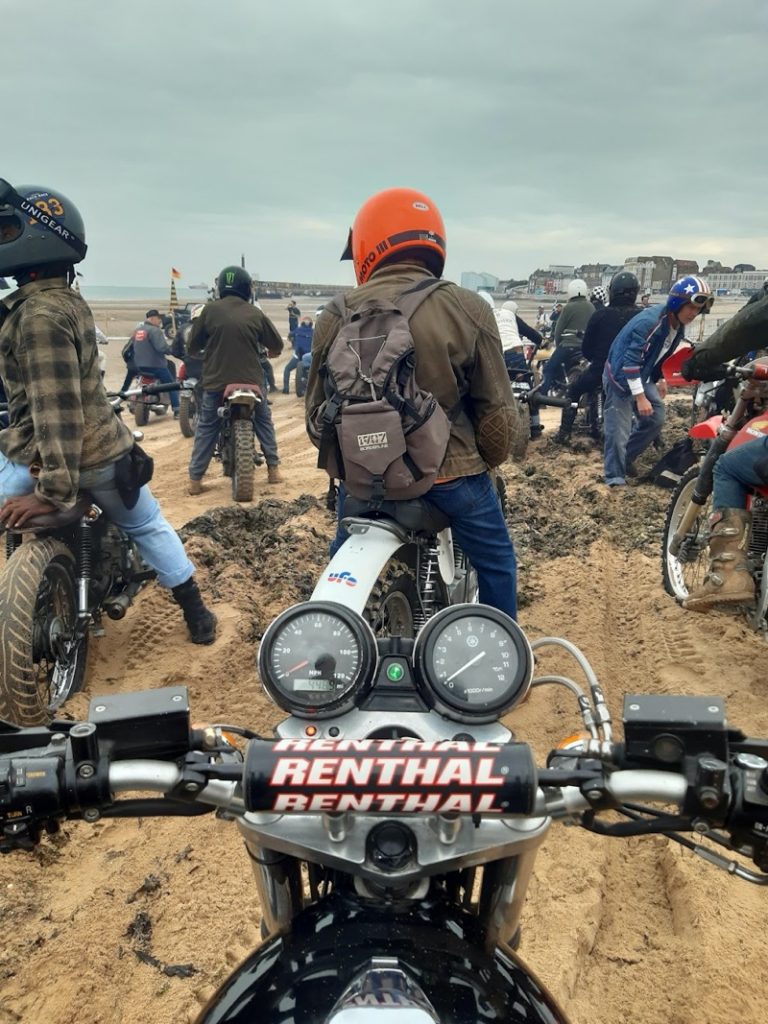
I also did everything on the bike, and I mean everything. Wiring, developing the pressurised carbs system and paint. Not just bolting other people’s work together.

What It’s Like to Ride
When it was first built, bloody evil honestly. It was running a twin-stage Turbo Smart programmable boost system, 12 then 17 psi as it was set up for the drag bike. This was the hospital express as it would go berserk when the second stage loaded up the wastegate. I promptly removed the system and set it up as a single-stage system with the wastegate lifting at 10psi. The HSR45 had a 3.5mm main jet — yes, that’s right, you could measure it with a vernier!
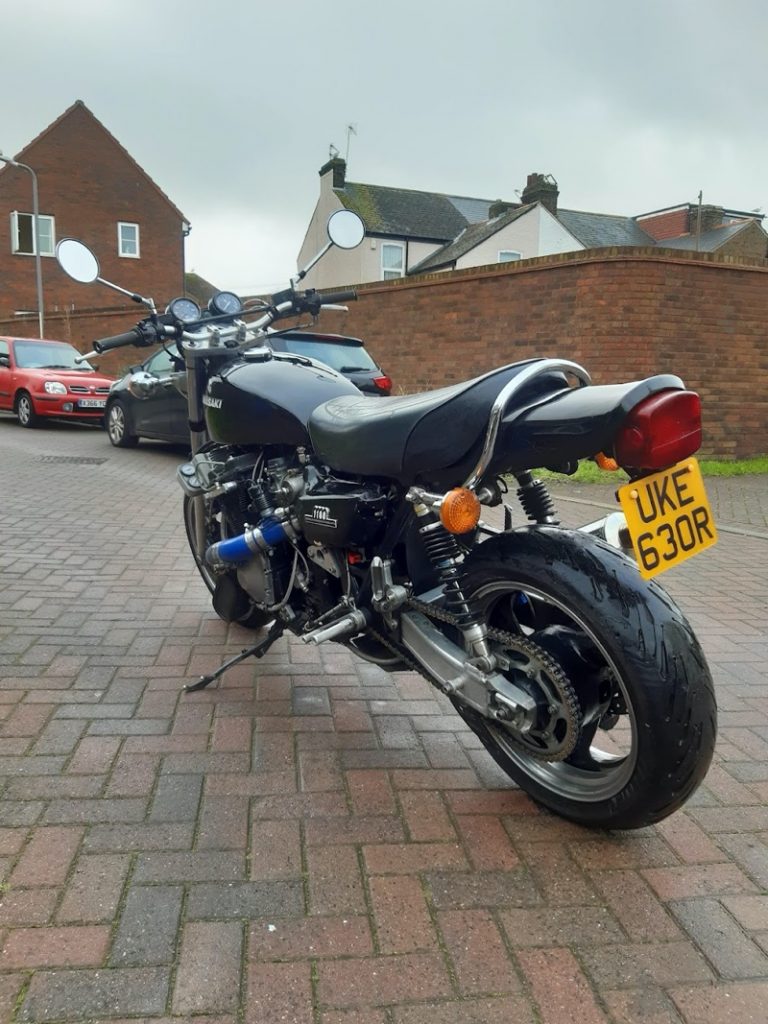
It had poor starting and idling and was really laggy, but it ran well enough for me to rip around on it, including a visit to the Isle of Man where it had the room it needed across The Mountain. It needed space to get spooled up and breathe where it made quite a bit of power — not sure how much, but it would absolutely rip. I had it on long-legged gearing at this point and it would do 140mph in third gear. It’s now on a 48t rear sprocket that makes it more manageable around town.
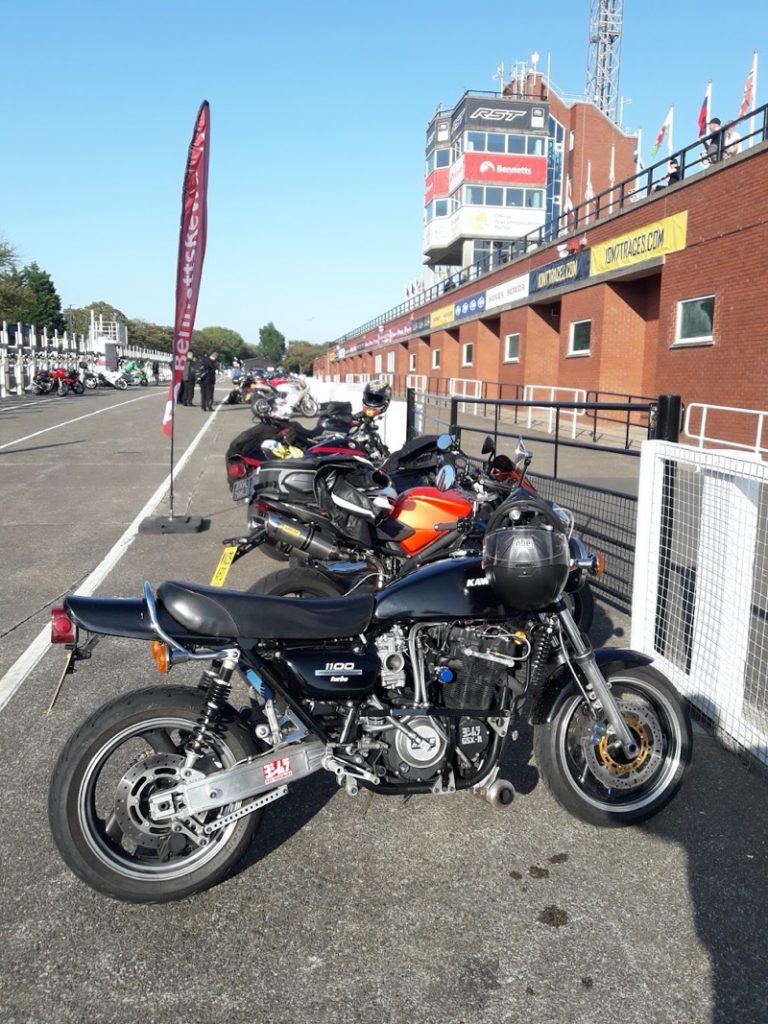
Following the conversion to pressurised 36mm Mikuni carbs and the TD04 Subaru turbocharger, it’s a long way from the beast it was and I sometimes miss that. On the positive side, it starts, idles and pulls cleanly throughout the rev range. It also makes lots of power, spooling up from around 4000rpm and making a ton of power right up to the 10k rev limit set on the Dynatek ignition system. You can go to the shops on it, move through traffic and carry passengers just like you would on any other bike. Guy at MotoEdit in Huntingdon was a star, and on his dyno we saw numbers in the 230bhp zone with fat torque to match following the blow-through conversion.
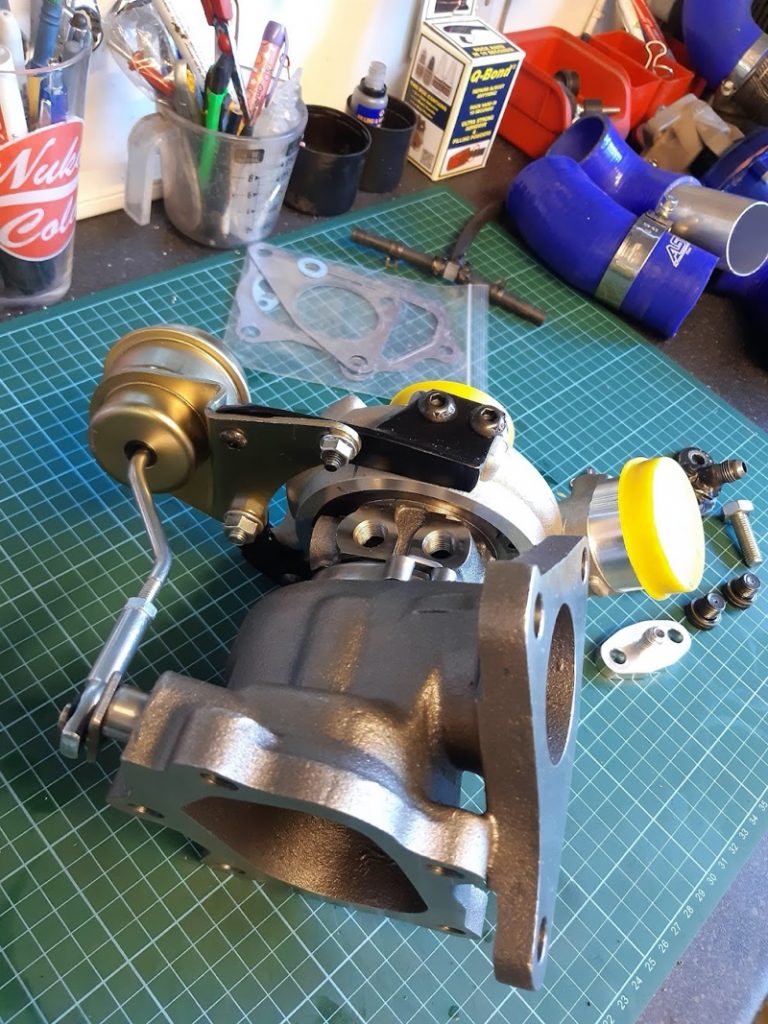
I have to retain the lock-up clutch due to the power output — without it, the engine just frazzles the plates. I have short M6 bolts and nylocs in the arms, which seems to be enough to stop it slipping but still lets you use reasonable rpm to pull away, although if you dial in too much throttle while pulling away, it will still rip the clutch lever out of your hand.

I have retained the standard design Kawasaki throttle/switchgear on the right handlebar. This needs what feels like three quarters of a revolution to get to max throttle, it does however allow you to open the carbs up progressively. No need for a quick action twist grip here, possibly not a great idea either.
If it’s running 15psi, and has a short (200mm) exhaust, it is extremely fast. The bike runs out of gearbox very quickly, and even roll on acceleration from 100mph to 140 plus is ballistic. As it has no fairing and a 1977 chassis, it’s not exactly a relaxing ride at speed. If you have seen Return of the Jedi, the Ewok on a speeder bike sums up the experience. It has Hayabusa power, but the Zeds braced and modified chassis is no match for a ‘Busa frame.
It’s currently running 10psi as it’s done 5000 miles since the initial build. I thought a de-tune may give the motor an easier time before a planned rebuild. It feels like it’s still pushing out a good 170 to 180 hp according to my “ass dyno.”
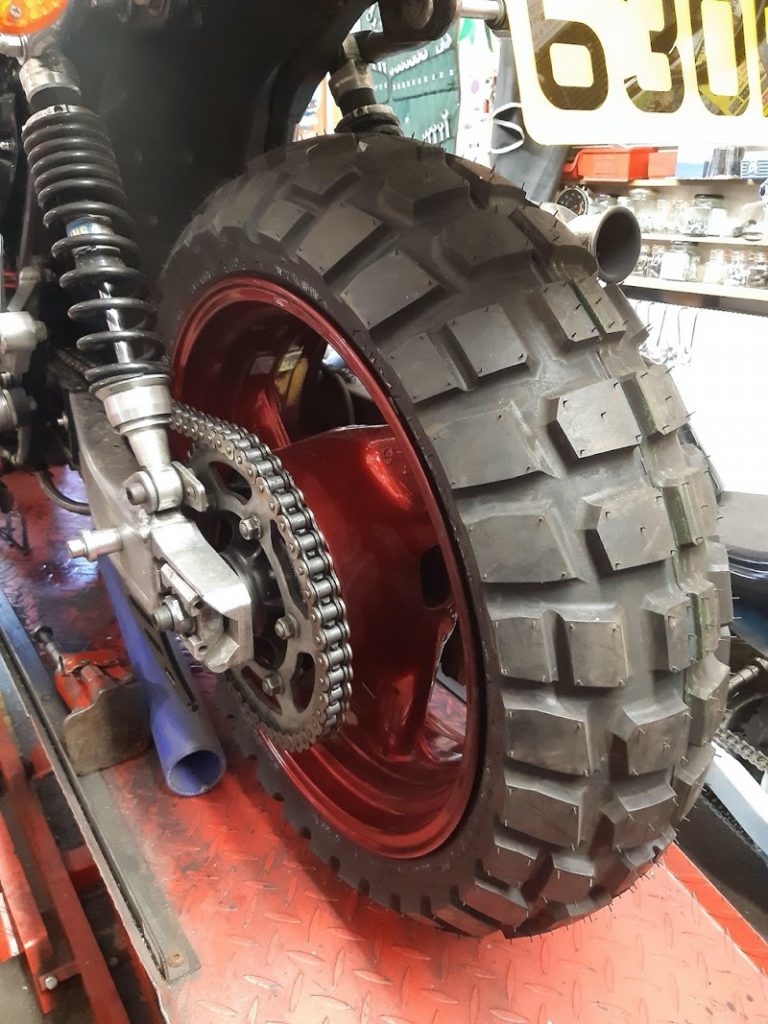
Is There Anything I am Proud of?
I am not so sure about being proud, but I have got a real sense of achievement from this bike. I have sourced information from many places during the build and its various incarnations. With mechanics, I am lucky that I just absorb what I see without trying because I still find it all so interesting. I taught myself about forced induction to the level of building my own systems that work and make good reliable power without fancy-pants electronics. It’s all springs, jets, hoses and pumps. The most complex component is the ignition unit that allows me to run retard curves. An adjustable bus air brake light switch sends an earth to the module at a set psi where the timing is retarded by 8, 12, or however many degrees I need. I generally run on the 1psi to 1 degree theory. The fully functioning pressurised carbs was a good moment following the weeks of work I put into them, harnessing the power or dynamic boost and the 1:1 fuel pressure regulator was the key. A Honda industrial engine valve spring was a vital addition to the Chinese regulator from Ebay, allowing it to function as I wished. An AEM wide band air/fuel gauge was an indispensable part of the jigsaw too.

As I said before, getting the look right was so important to me, and I didn’t want to compromise the appearance by cutting the tank, having dodgy looking gear linkages, etc. I actually moved the side stand forward about 6 inches to solve one problem — think outside the box. I wanted to create something different, it’s how I always start a build. As far as I know, it’s the only KZ1000/GSXR1100 turbo out there?
Favourite Comments
“You have ruined that.”
“Not much Zephyr left is there.”
“You idiot.”
